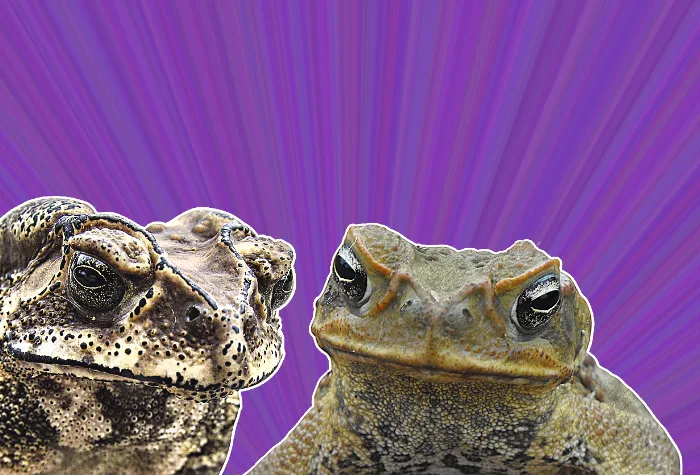
Conservationists rush to contain toxic cane toad invasion
Once cane toads become established in an environment, it's hard to curb their population.
Conservationists in Taiwan hope to minimize the negative ecological impact of a cane toad invasion.
Over the weekend, a team of volunteers assembled to remove the invasive and toxic toads from the environment, collecting up to 300 during their outing, NBC News reports.
The cane toad (Rhinella marina) is originally from the Americas, with a range that spans from Peru to Texas.
While native to about 14 countries, they're now established in around 40 nations. Cane toads aren't in Canada yet, but conservationists say it could happen at some point, given their stronghold in parts of the U.S.
Sometimes, like in Australia and Florida, the toads were introduced intentionally, as a form of pest control. But with no natural predators, a voracious appetite, and a break-neck reproductive cycle, cane toad populations can quickly explode.

GIF by Cheryl Santa Maria.Cane toads: Josch13/Pixabay, snarsy/Pixabay, edelmar/Getty Images. Background: Pixabay/Pexels.
To date, there is no known way to curb their growth once they've become established. Taking cues from studies that have linked their presence to ecological decline, the Global Invasive Species Database lists cane toads as one of the worst invasive species in the world.
THE CANE TOAD PROBLEM
When threatened, cane toads release a toxin called bufotoxin, which is lethal to most predators. It's a competitive advantage that helps them flourish in non-native lands.
Females can produce between 8,000 and 35,000 eggs at a time, up to two times a year. Tadpoles are toxic as well, and once they reach adulthood, a cane toad can live up to 25 years.
They'll eat anything - from rodents, to birds, to insects that play a vital role in maintaining a local environment
REMOVING TOADS IN TAIWAN
Experts in Taiwan became aware of the recent invasion after seeing photos posted online.
"A speedy and massive search operation is crucial when cane toads are first discovered," Lin Chun-fu, an amphibian scientist at Taiwan's Endemic Species Research Institute, told the French news agency AFP.
"They have no natural enemies here in Taiwan."
It's believed the toads found their way into the environment due to a black market pet trade. They are sometimes used in traditional medicine and are popular pets in Taiwan, AFP reports.
The Taiwanese government banned the import of the toads in 2016, but illegal trading continues.
It's not clear how long the toads have been spreading in the wild in Taiwan, but experts suspect their foray began a few months ago, LiveScience reports. Yang told AFP he hopes the volunteers have contained the invasion, but they won't know for sure until spring mating season.
Thumbnail by Cheryl Santa Maria. Cane toads: Josch13/Pixabay, snarsy/Pixabay. Background: Davidzydd/Pixabay.






